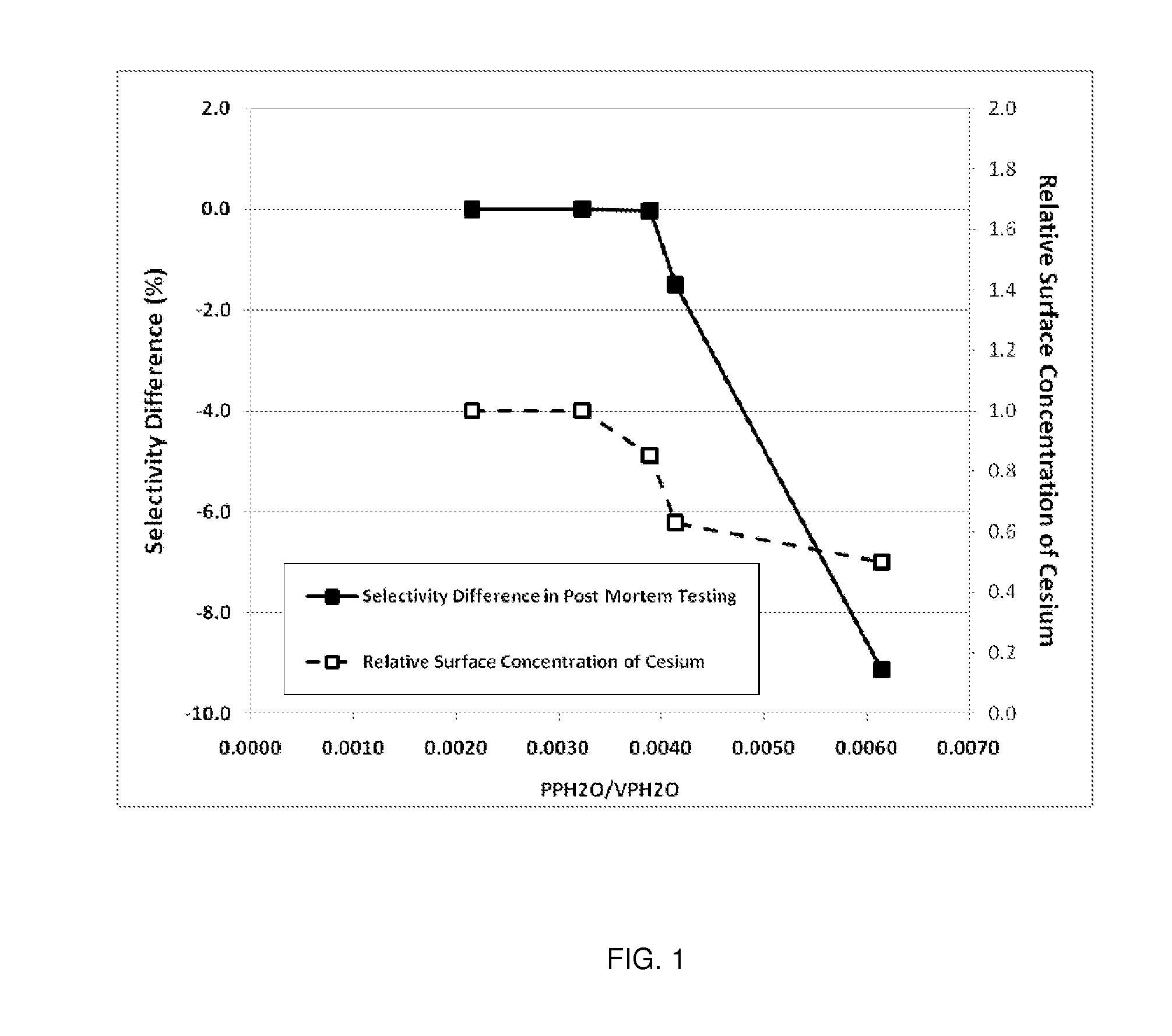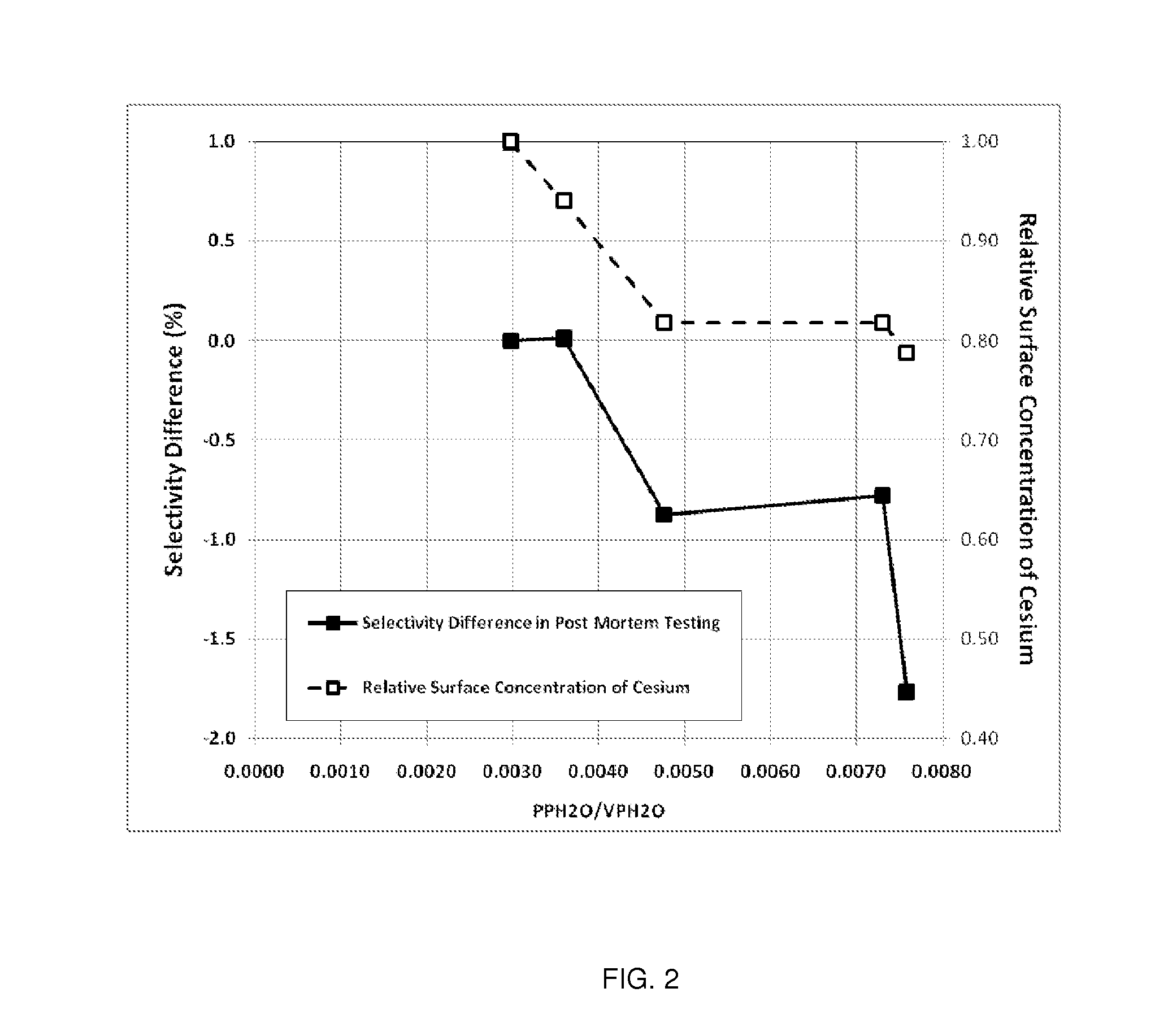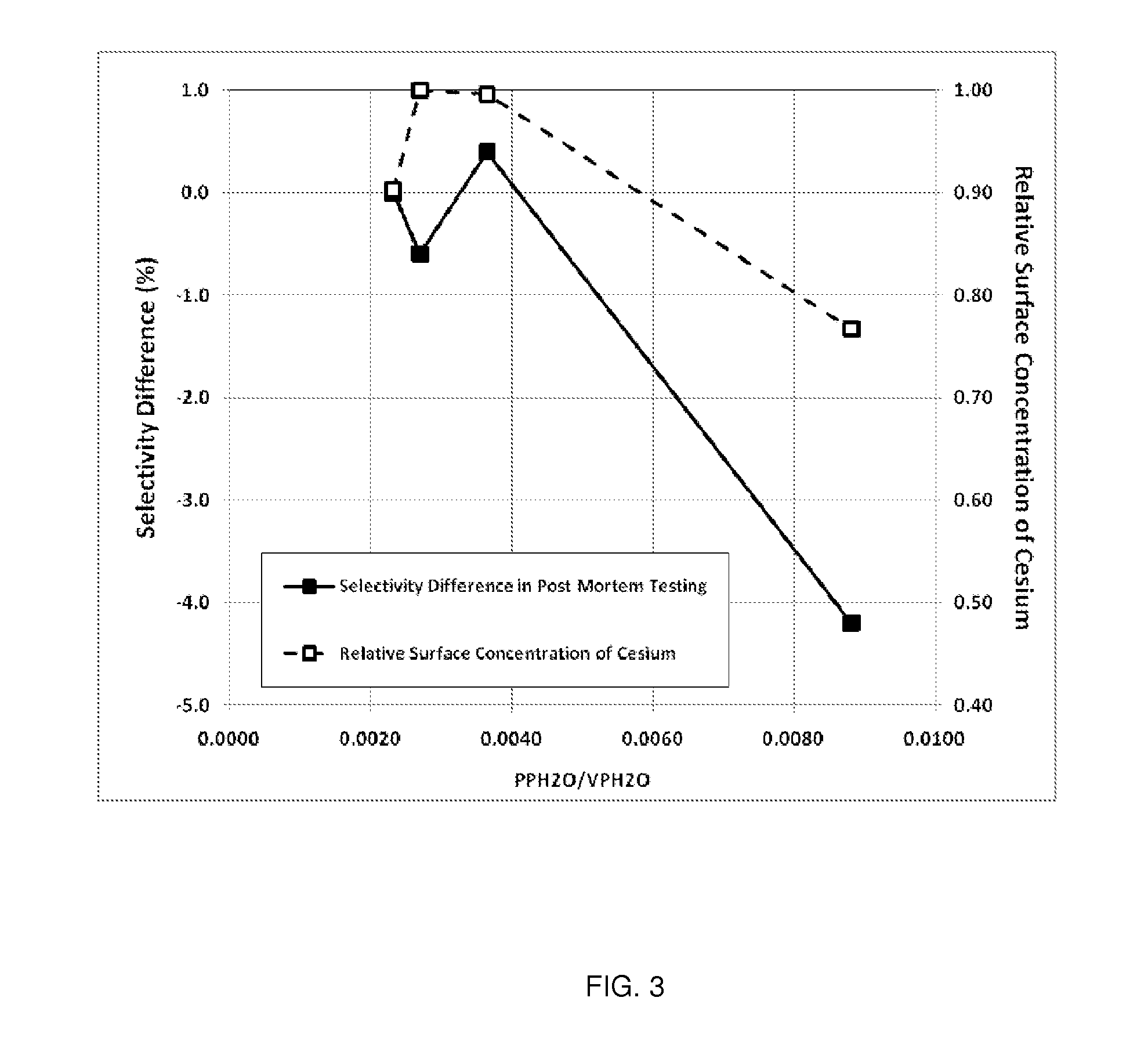Eo process control
a technology of olefin oxide and process control, which is applied in the direction of oxygen-containing compound preparation, organic chemistry, chemistry apparatus and processes, etc., can solve the problems of reducing the selectivity rate of silver-containing catalysts, affecting the performance of silver-containing catalysts, and adsorption of water, so as to reduce the rate of selectivity loss
- Summary
- Abstract
- Description
- Claims
- Application Information
AI Technical Summary
Benefits of technology
Problems solved by technology
Method used
Image
Examples
example 1
Determination of the Ratio of PPH2O / VPH2O and Comparison to Relative Surface Concentration of Cesium and Post-Mortem Catalyst Performance
[0109]The parameters needed to perform the calculations for this example are given in Table 1. Note, Steps A-E are plant operating steps and accompanying operating data. Step F is a post-mortem analysis of the catalyst.
TABLE 1Parameters Used for Calculation of the Ratio ofH2O Partial Pressure to the H2O Vapor PressureReactor Inlet Pressurebara15.0Reactor Outlet Pressurebara13.3Total Tube Lengthm12.8Reactor Inlet H2O Mole Fractionfrac.0.0040Inlet CO2 Mole Fractionfrac.0.0310Outlet CO2 Mole Fractionfrac.0.0437
[0110]Axial Temperature Profile
[0111]The EO Plant (referred to as Plant W) used in this example has multiple thermocouples in multiple tubes of the reactor allowing a direct and detailed measurement of the catalyst temperature profile. Temperatures measured at 2.1, 6.6, 10.4, 12.3 and 12.8 meters from the inlet of the reactor tube were used for ...
example 2
Changing Moderator Levels as Water Levels Change
[0137]Example 2 shows the impact on optimum moderator levels with various catalysts as the inlet water level changes:
[0138]A commercially available, Re-containing catalyst with 13.2 wt % silver was operated in a laboratory reactor under the following conditions: inlet (dry) composition of 7.3% O2, 30.9% C2H4, and 1.6% CO2, with 18.3 barg inlet pressure, and 3900 gas hourly space velocity, controlling the temperature to maintain a ΔEO of 2.50%. When the inlet water level was increased from 0% to 0.93% and re-optimized, the optimal moderator level decreased 22%. When the inlet water level was increased from 0% to 2.01% and re-optimized, the optimal moderator level decreased 26%. The corresponding outlet water levels for the three cases were 0.64%, 1.73%, and 3.07%.
[0139]A commercially available, Re-containing catalyst with 17.5 wt % silver was operated in a laboratory reactor under the following conditions: inlet (dry) composition of 7.3...
example 3
Determination of the Ratio of PPH2O / VPH2O and Comparison to Relative Surface Concentration of Cesium and Post-Mortem Catalyst Performance
[0143]The parameters needed to perform the calculations for this example are given in Table 3. Note, Steps A-E are plant operating steps and accompanying operating data. Step F is a post-mortem analysis of the catalyst.
TABLE 3Parameters Used for Calculation of the Ratio of H2O PartialPressure to the H2O Vapor Pressure for Plant XReactor Inlet Pressurebara22.5Reactor Outlet Pressurebara21.1Total Tube Lengthm12.0Reactor Inlet H2O Mole Fractionfrac.0.0034Inlet CO2 Mole Fractionfrac.0.0034Outlet CO2 Mole Fractionfrac.0.0135
[0144]Axial Temperature Profile
[0145]The EO Plant (referred to as Plant X) used in this example uses water-cooled reactors and has an outlet gas temperature measurement that is representative of the catalyst temperature from the 1.5 m position in the catalyst bed to the outlet of the catalyst bed. Thus, the catalyst temperature for e...
PUM
| Property | Measurement | Unit |
|---|---|---|
| Temperature | aaaaa | aaaaa |
| Temperature | aaaaa | aaaaa |
| Fraction | aaaaa | aaaaa |
Abstract
Description
Claims
Application Information
 Login to View More
Login to View More - R&D
- Intellectual Property
- Life Sciences
- Materials
- Tech Scout
- Unparalleled Data Quality
- Higher Quality Content
- 60% Fewer Hallucinations
Browse by: Latest US Patents, China's latest patents, Technical Efficacy Thesaurus, Application Domain, Technology Topic, Popular Technical Reports.
© 2025 PatSnap. All rights reserved.Legal|Privacy policy|Modern Slavery Act Transparency Statement|Sitemap|About US| Contact US: help@patsnap.com



